How Machine Learning and Virtual Staffing Can Improve Sepsis Treatment

Lisa-Mae Williams, PhD, RN, CPAHA | September 30, 2025
Sepsis remains one of the most pressing challenges in healthcare. With over one million annual admissions for sepsis and care costs surpassing $50 billion, the urgency to improve diagnosis and treatment is undeniable. The overlapping of financial and clinical pressures has positioned sepsis management as a patient safety priority and standard for meeting healthcare regulations.
Over the past decades, sepsis treatment has undergone dramatic transformations, marked by key milestones such as the introduction of Early Goal-Directed Therapy, the Surviving Sepsis Campaign and the Centers for Medicare and Medicaid Services (CMS) SEP-1 core measure. While these frameworks have established critical guardrails for timely diagnosis and intervention, differences in how hospitals follow them have revealed gaps in traditional staffing models and workflow coordination.
To address these opportunities, healthcare systems are now turning to innovative approaches in machine learning and virtual staffing models. These technologies serve as reliable tools for clinical expertise, enabling more consistent, responsive and cost-effective care, especially in environments with limited resources and high patient volumes.
Tackling a Multifaceted Problem
Sepsis is a life-threatening condition that can cause multiple organ failure and blood clots in a matter of a few hours or days. Therefore, effective sepsis care requires early recognition, timely antibiotic administration and seamless internal communication.
Yet hospitals frequently struggle with these elements, elevating the stakes even more for vulnerable patients. Severe sepsis and septic shock remain major contributors to maternal mortality, and nearly 50% of sepsis survivors are readmitted within six months.
Since 2015, the CMS SEP-1 measure, known as the Severe Sepsis and Septic Shock Management Bundle, has required hospitals to report on their compliance with specific time-sensitive treatment bundles. This is intended to improve the care of patients with severe sepsis and septic shock, ultimately reducing mortality. However, implementation still varies across institutions; to meet these standards, hospitals need scalable solutions that support frontline staff while improving decision accuracy and operational efficiency.
The Rise of Virtual Sepsis Units
One promising solution is the Virtual Sepsis Unit (VSU), or tele-sepsis unit. The VSU is designed to fill critical care gaps across diverse hospital settings, including community hospitals, academic centers, critical access facilities and neighborhood hospitals. This model combines expert-led remote oversight with real-time alert tracking and centralized workflow coordination.
Here’s how it works:
- Initial assessment: Electronic medical records (EMR) have algorithms that constantly screen patients using clinical criteria, including Systemic Inflammatory Response Syndrome (SIRS), monitoring vital signs and symptoms.
- Team activation: Suspected cases trigger real-time alerts to providers and rapid response teams, enabling evaluation and intervention.
- Diagnostics and treatment: Timely collection of blood cultures and labs are followed by immediate administration of antibiotics and fluid resuscitation.
- Monitoring and documentation: Continuous patient monitoring and real-time documentation support bundle compliance and regulatory tracking.
Staffed 24/7 by advanced practice providers and critical care nurses, VSUs act as a resource hub, harmonizing efforts across various care settings, including emergency departments and inpatient units. The VSU team complements these efforts by ensuring accountability and minimizing missed steps, resulting in shorter lengths of stay and reduced screening time and direct costs.
Machine Learning: Amplifying Detection and Decision-Making
Similarly, machine learning (ML) tools are reshaping how hospitals detect sepsis risk and optimize treatment plans. ML models are a type of artificial intelligence that analyzes large datasets that may include vital signs, lab results and clinical documentation, allowing them to identify early indicators of sepsis before symptoms become critical. Potential uses of ML in healthcare include predictive analytics, diagnoses and treatment, personalized medicine, clinical decision support and population health management.
ML can be categorized into two buckets: supervised learning and unsupervised learning. Supervised ML trains algorithms on known input and output data to predict future outputs. Unsupervised ML discovers hidden patterns or internal structures within the input data. ML systems in healthcare continuously assess patient data in real time, enhancing the sensitivity and specificity of sepsis alerts.
Key benefits of ML in sepsis management include:
- Improved alert sensitivity and specificity
- Resource optimization
- Real-time decision support
- Continuous learning
By combining ML-driven alerts with virtual support, hospitals create a hybrid system that is both technologically advanced and clinically supported. This dual approach streamlines response times, increases bundle compliance and alleviates logistical burdens on clinicians.
Real Results with Real Impacts
Multi-site implementations of the VSU model have demonstrated measurable improvements, most notably the rise of adherence rates reaching and maintaining compliance in the top 10th percentile across participating hospitals, well above the national benchmark of approximately 60%. Intervention rates and follow-ups improved, missed cases decreased and clinicians reported greater confidence in sepsis protocols.
Hospitals now view coordinated sepsis response not just as a checkbox for compliance, but as a strategic imperative tied to better patient outcomes, reduced costs and enhanced staff efficiency.
To learn more about starting your own Virtual Sepsis Unit, click here.



